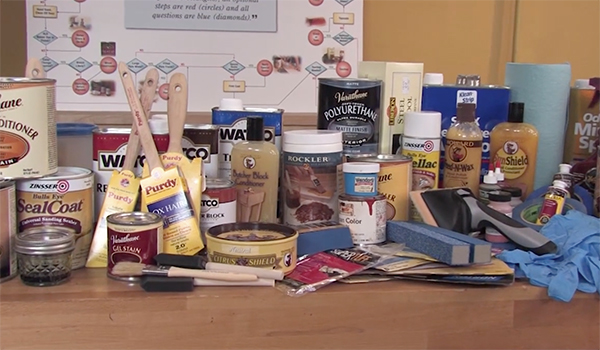
I’ve heard, read, and probably made up a few of my own differences between varnish, lacquer, and polyurethane, but what are the real differences? And how do I know what the best type is for the job?
Rob Johnstone: “Best” in this case, is not an exact term. The best finish available to me might be out of reach for many. (I can go use my buddy’s professional shop and spray catalyzed lacquer.) Best must take into account what the project is to be used for. For example, the finish on a picture frame (which will hang on the wall and be seldom touched) does not need the durability and scratch resistance of a child’s desk. The difference between the products you’ve named is mostly chemical, and in practical terms … how long they take to dry. All of the above are durable, time proven products.
Michael Dresdner: Not all answers can be reduced to a bumper sticker. In many cases, the more concise the answer, the more inaccurate. That disclaimer aside, be aware that the terms you cited have all been Bowdlerized and therefore have many meanings, depending on the person using them. As far as formulators are concerned, lacquer is a fast drying coating that cures strictly by solvent evaporation. It can contain any number of different resins, including cellulose nitrate, CAB, vinyl, acrylic, and polyurethane, to name a few. Varnish is oil cooked with resin that cures by oxidative polymerization. It too can contain many different resins, both synthetic and natural, including the two most common ones, alkyd and polyurethane. By now, you’ve realized that the third “coating” is shorthand that refers to a resin, not a finish. Polyurethane resins are used in oil varnishes, water-based coatings, lacquers, and cross-linking finishes, and these are often referred to simply as “polyurethane” which only adds to the confusion.
As for how to choose a finish: I use three criteria. First, what must it endure (how durable must it be)? Second, what do I want it to look like? Third, how do I want to apply it? These questions applied to a decision “tree” will give you an answer, but you’ll need to know the various characteristics off all the finish options. For that you will need a score card. Three of my books on the market contain such a scorecard – typically in the chapter called ‘Choosing a Finish.’





